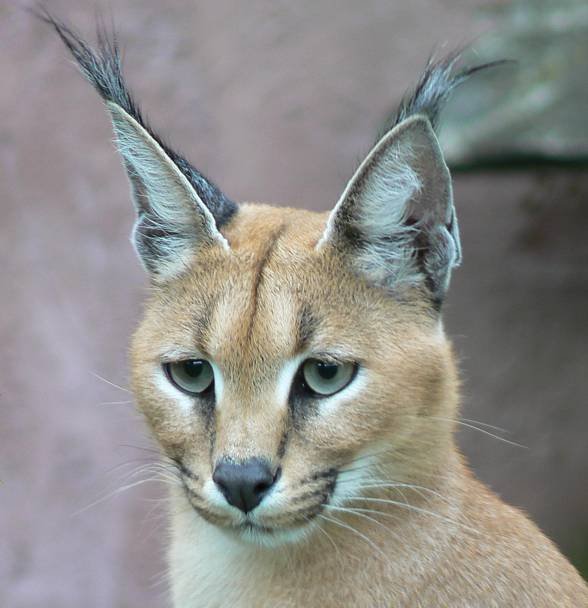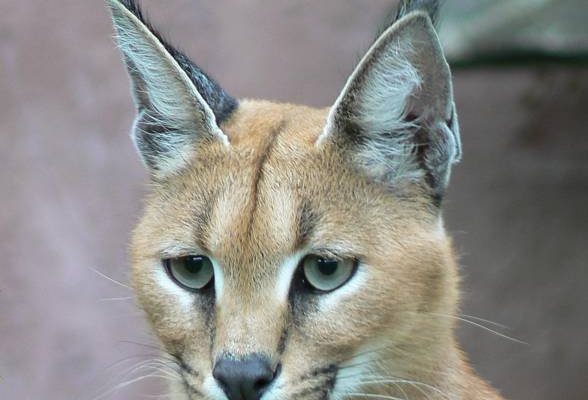
The caracal’s story is woven through time, dating back millions of years. Imagine a massive family tree filled with branch after branch, all leading to different species of cats. Now, if we zoom in on a specific branch, we find the caracal nestled among its relatives. This journey not only highlights the caracal’s adaptations and survival strategies but also reveals the bigger picture of how evolution works. Think of it as unfolding a mystery where the caracal is both the main character and a piece of the puzzle.
What is a Caracal?
Before diving into its evolutionary history, let’s take a moment to truly appreciate what the caracal is. Scientifically known as *Caracal caracal*, this medium-sized wild cat is known for its striking features. With long, tufted ears that can swivel toward sounds, the caracal is an expert hunter. Its coat is typically a rich reddish-brown, which helps it blend into its dry, savanna-style habitats.
Caracals are agile and can leap impressive distances—over ten feet—to catch birds or small mammals. They’re solitary creatures, preferring to stalk their prey alone rather than hunting in groups. By examining the caracal’s physical traits and behaviors, you get a clearer idea of how it has adapted to its environment over time.
It’s essential to understand that the caracal belongs to the Felidae family, which includes not just the big cats but also smaller ones like domestic cats. Among its relatives are the serval and the African golden cat, both of which share certain traits and habitats. This family connection helps us appreciate the caracal’s unique place in the evolutionary tree.
The Origins of the Caracal
The evolutionary journey of the caracal begins millions of years ago. The Felidae family emerged in Asia around 10-15 million years ago. Over time, various species evolved, adapted to different environments, and diversified into the various cats we recognize today.
The ancient ancestors of today’s caracal likely migrated from Asia into Africa. They adapted to a range of habitats, from deserts to forests. The caracal, as we know it, became distinct around two million years ago. This timeline tells us that the caracal’s ancestors faced shifts in climate and terrain, which influenced their physical development and hunting behavior.
Interestingly, while many big cats became larger and more powerful, the caracal evolved to be smaller and more agile. This agility allows it to navigate its environment with ease, making it an adept hunter of birds and small mammals. You might be wondering how such adaptations happened. The answer lies in natural selection, where traits that helped the caracal survive became more common over generations.
Physical Adaptations and Their Importance
The caracal’s evolution is marked by various physical adaptations that have enabled it to excel in its environment. The long tufted ears, for instance, aren’t just a stylish feature; they enhance its hearing ability, allowing it to detect prey even in dense grass or bush.
This cat boasts powerful hind legs that allow it to leap high and far. When hunting, it can launch itself into the air to snatch birds right off the ground. Imagine being able to jump into the air like that! It’s like having superhero abilities in the wild.
In addition to its physical prowess, the caracal’s coat plays a vital role in its survival. The coloration provides excellent camouflage in its natural habitats, helping it to blend in with the savanna grasses. This stealth is critical for both hunting and avoiding detection by larger predators. Over time, these adaptations have shaped the caracal into a highly specialized and effective hunter.
The Caracal’s Habitat and Range
Caracals are predominantly found in Africa, but their range extends into parts of the Middle East and Central Asia. They thrive in a variety of environments, including savannas, arid regions, and scrub forests.
Due to their adaptability, caracals can be found at different elevations and can even handle a range of temperatures. This flexibility in habitat choice reflects a significant evolutionary trait. It shows how these cats have managed to survive in such diverse landscapes over thousands of years.
Unfortunately, habitat loss due to human encroachment and agricultural practices poses a threat to their populations. Understanding the caracal’s habitat and the history of its evolution can help conservation efforts aimed at protecting this unique species and its environment.
Behavioral Adaptations: Hunting and Social Structure
One of the most fascinating aspects of the caracal is its hunting behavior, which has evolved to suit its environment. They hunt primarily at night (a behavior known as being crepuscular), when their prey is most active. This nocturnal lifestyle minimizes competition with larger predators, ensuring a better chance of survival.
Caracals are known for their intelligence and cunning hunting strategies. They often stalk their prey silently before making a swift and powerful leap. Imagine standing still, waiting patiently, and then suddenly springing into action to catch your meal. This remarkable ability to calculate distance and power during a leap is a testament to the caracal’s evolution as a skilled hunter.
Socially, caracals are typically solitary. They come together only for mating. This solitary existence might sound lonely, but it actually reflects a successful survival strategy. By being alone, they can maintain their territory without competing for resources. The caracal’s social structure showcases its evolution in a world where space and resources can be scarce.
Conservation Status and Future
Despite being resilient creatures, caracals face several threats in the modern world. Habitat loss, hunting, and conflicts with humans have led to a decline in their populations in some areas. While the International Union for Conservation of Nature (IUCN) currently lists caracals as “Least Concern,” that doesn’t mean they are out of danger.
Conservation efforts are crucial to ensure that these beautiful cats continue to thrive. Programs focused on habitat preservation and educating local communities about the caracal can help mitigate human-wildlife conflict. Protecting the caracal means respecting its evolutionary history and ensuring a future for this remarkable species.
The caracal’s story reminds us of the delicate balance between nature and human activity. As we learn more about their evolutionary journey, we can appreciate the importance of protecting not just these cats but their entire ecosystems.
The evolutionary history of the caracal is a captivating tale of adaptability, survival, and resilience. From its ancient ancestors in Africa to its role today, the caracal is a unique part of the big picture of feline evolution.
As we’ve explored, every aspect of the caracal—its physical traits, hunting behaviors, and even its social structure—reflects a long journey through time. By understanding and appreciating the caracal’s evolution, we can better advocate for its conservation. After all, preserving the caracal is not just about saving a species; it’s about maintaining the rich tapestry of life on Earth. So, the next time you think about wild cats, remember the fascinating history behind the caracal, a true marvel of evolution.

